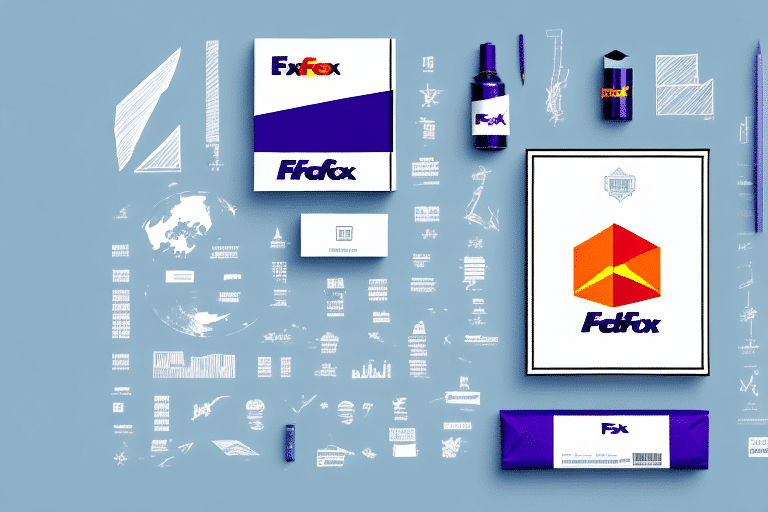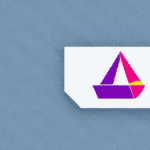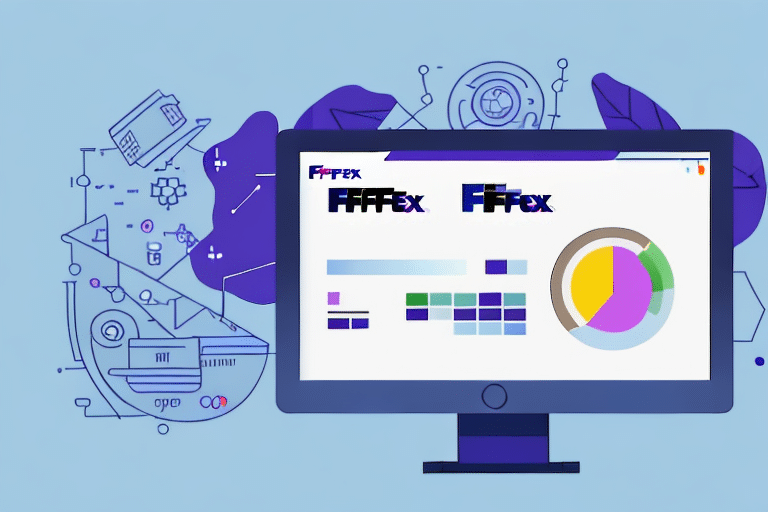How to Add a Hazmat Shipment in FedEx Ship Manager
Shipping hazardous materials requires meticulous adherence to regulations to ensure the safety and security of all parties involved. This guide provides a comprehensive, step-by-step approach to adding a hazmat shipment using FedEx Ship Manager, along with valuable tips and troubleshooting advice to navigate potential challenges effectively.
Understanding Hazmat Regulations and Requirements
Before initiating a hazmat shipment through FedEx Ship Manager, it's crucial to comprehend the various regulations and requirements governing the transportation of hazardous materials. These regulations are designed to mitigate risks and ensure safe handling throughout the shipping process.
Regulatory Framework
The primary regulatory bodies overseeing hazmat shipping in the United States include the Pipeline and Hazardous Materials Safety Administration (PHMSA) and the Federal Aviation Administration (FAA). Compliance with the Hazardous Materials Regulations (HMR) is mandatory.
Key Requirements
- Proper Labeling: Each package must display appropriate hazard labels indicating the nature of the materials.
- Packaging Standards: Hazardous materials must be packaged in approved containers that prevent leaks and withstand transportation stresses.
- Documentation: Accurate and complete documentation, including a Shipper's Declaration for Dangerous Goods, is required.
- Training: Personnel involved in shipping hazmat must undergo specialized training to handle materials safely.
Failure to comply with these regulations can result in severe penalties, including fines and shipment delays.
The Importance of Proper Hazmat Shipping
Proper hazmat shipping is not only a regulatory requirement but also essential for safeguarding people and the environment. Inadequate handling can lead to accidents, environmental contamination, and significant legal and financial repercussions.
Safety and Environmental Protection
Incorrectly shipped hazardous materials can pose serious risks, including chemical spills, fires, and explosions. These incidents can have devastating effects on ecosystems, human health, and property.
Legal and Financial Implications
Non-compliance with hazmat shipping regulations can lead to hefty fines, legal actions, and damage to a company's reputation. Ensuring proper shipping practices helps avoid these consequences and maintains trust with clients and stakeholders.
FedEx Ship Manager: An Overview
FedEx Ship Manager is a versatile online shipping tool designed to streamline and manage various aspects of the shipping process. It offers features tailored for businesses that need to handle both standard and hazardous shipments efficiently.
Key Features
- Hazmat Integration: Simplifies the process of adding hazardous materials to shipments by providing necessary fields and compliance checks.
- Price Comparison: Allows users to compare different shipping options and select the most cost-effective solution.
- Label Printing: Facilitates the creation and printing of shipping labels, including those required for hazardous materials.
- Customizable Reports: Generates detailed reports to help businesses analyze and optimize their shipping operations.
- International Shipping Support: Assists with customs documentation and compliance for international hazmat shipments.
By leveraging these features, businesses can enhance their shipping efficiency while ensuring compliance with hazmat regulations.
Step-by-Step Guide to Adding a Hazmat Shipment in FedEx Ship Manager
Follow these steps to successfully add a hazmat shipment using FedEx Ship Manager:
- Log In: Access your FedEx Ship Manager account using your credentials.
- Initiate Shipment: Click on the "Ship" button to begin the shipment process.
- Enter Shipment Details: Provide package information, including destination, weight, and dimensions.
- Select Hazardous Goods: Under the "Additional Details" section, choose "Dangerous Goods."
- Enter Hazmat Information: Input the hazardous material's identification number and proper shipping name.
- Specify Packaging: Indicate the number of packages and the type of packaging used.
- Assign Hazard Class: Select the appropriate hazard class, quantity limitations, and packing group based on the material.
- Emergency Contacts: Provide emergency contact information in case of an incident.
- Review and Submit: Verify all entered details for accuracy before finalizing the shipment.
Ensure all required documentation, such as the Material Safety Data Sheet (MSDS) and the Shipper's Declaration for Dangerous Goods (SDDG), accompanies the shipment to maintain compliance.
Compliance and Documentation
Accurate completion of all documentation is critical. Utilize resources like the PHMSA's Hazmat Preparation Guide to ensure all requirements are met.
Tips for Ensuring Safe and Secure Hazmat Shipping
Implementing best practices can significantly enhance the safety and security of hazmat shipments:
- Consult Experts: Work with professionals knowledgeable in hazmat regulations to navigate complex requirements.
- Accurate Documentation: Double-check all shipping documents for completeness and correctness.
- Proper Labeling: Ensure all packages are labeled according to regulatory standards to convey the nature of the hazards.
- Optimal Packaging: Use appropriate packaging materials to contain and protect hazardous substances during transit.
- Emergency Preparedness: Maintain up-to-date emergency contact information and response plans.
- Regular Training: Conduct ongoing training sessions for employees to stay informed about best practices and regulatory changes.
Common Mistakes to Avoid When Adding a Hazmat Shipment in FedEx Ship Manager
Avoid these frequent errors to ensure a smooth hazmat shipping experience:
- Regulatory Non-Compliance: Failing to adhere to hazmat regulations can lead to severe penalties and shipment delays.
- Incorrect Labeling: Mislabeling packages can obscure the nature of the hazards, posing safety risks.
- Inadequate Packaging: Using unsuitable packaging increases the likelihood of leaks or spills during transit.
- Incomplete Hazmat Details: Omitting essential information about the hazardous material can disrupt the shipping process.
- Lack of Proper Training: Untrained personnel may mishandle hazardous materials, leading to accidents and non-compliance.
Troubleshooting Issues When Adding a Hazmat Shipment in FedEx Ship Manager
Encountering issues while processing hazmat shipments in FedEx Ship Manager is possible. Here are common problems and solutions:
- Incomplete Documentation: Ensure all required documents are filled out accurately. Use checklists to verify completeness.
- Incorrect Labeling: Revisit labeling guidelines and correct any discrepancies before shipping.
- Customs Delays: Prepare thorough customs documentation and consult with international shipping experts to facilitate smooth processing.
- Package Damage or Loss: Utilize robust packaging methods and consider insurance for high-risk shipments.
For persistent issues, consult FedEx support or a hazmat shipping specialist to identify and resolve underlying problems effectively.
The Benefits of Using FedEx Ship Manager for Hazmat Shipping
FedEx Ship Manager offers several advantages for businesses handling hazardous materials:
- Streamlined Processes: Automates various aspects of shipping, reducing manual errors and saving time.
- Regulatory Compliance: Provides tools and resources to help maintain adherence to hazmat regulations.
- Real-Time Tracking: Enables continuous monitoring of shipments to ensure timely delivery and address issues promptly.
- Dedicated Support: Access to specialized support teams for assistance with hazmat shipping queries and problems.
- Cost Efficiency: Optimizes shipping choices to balance cost and compliance effectively.
By leveraging these benefits, businesses can enhance their hazmat shipping operations, ensuring safety, compliance, and efficiency.
In summary, FedEx Ship Manager is a reliable tool for managing hazmat shipments, offering comprehensive features that support regulatory compliance and streamline the shipping process. By following best practices and utilizing the platform's capabilities, businesses can confidently handle the complexities of hazardous material transportation.






















